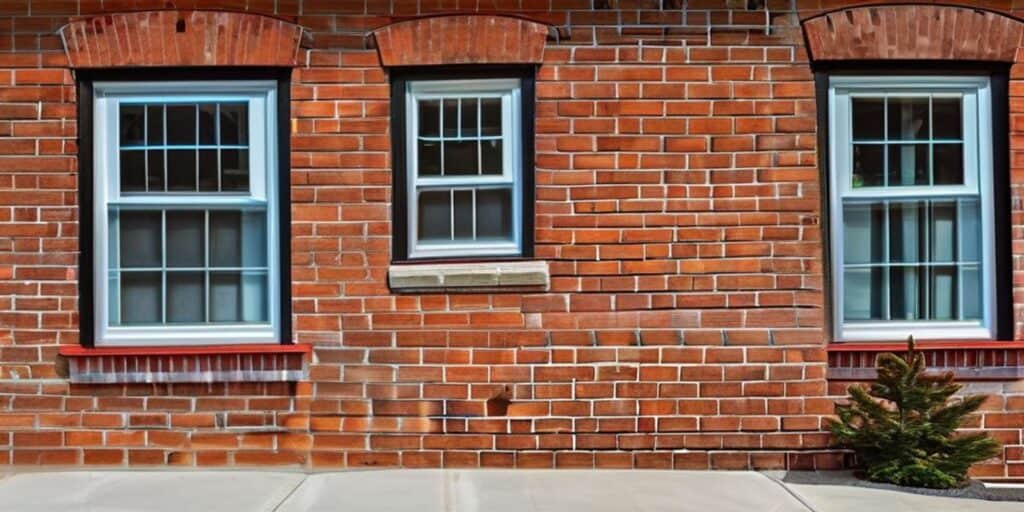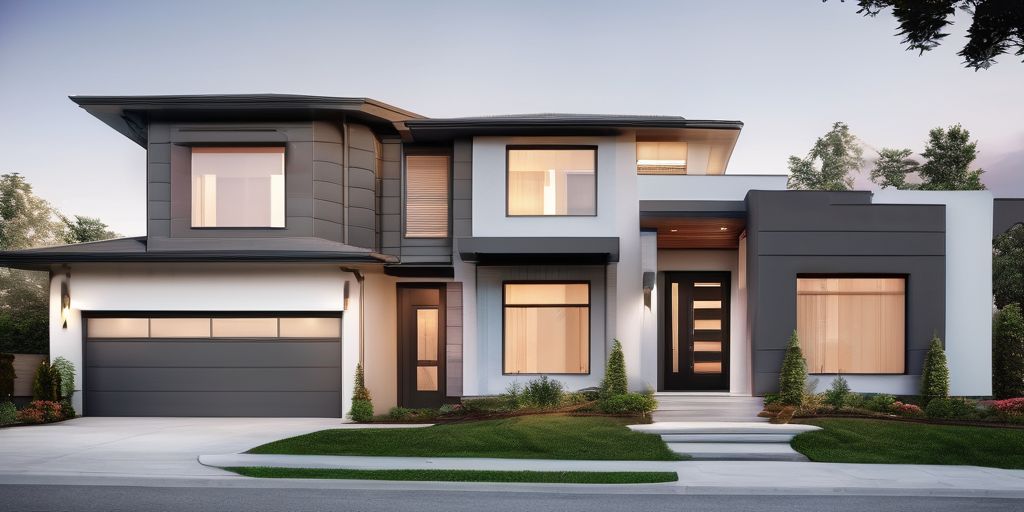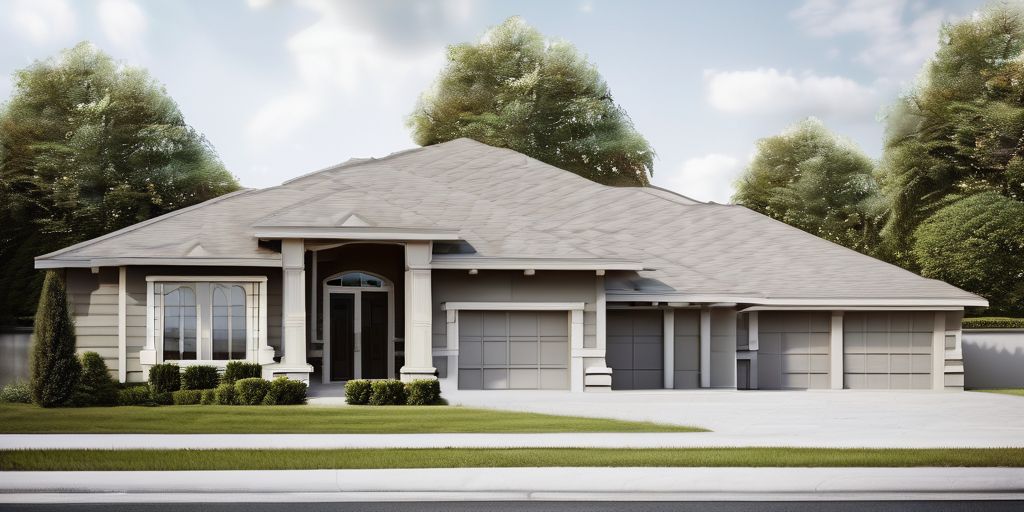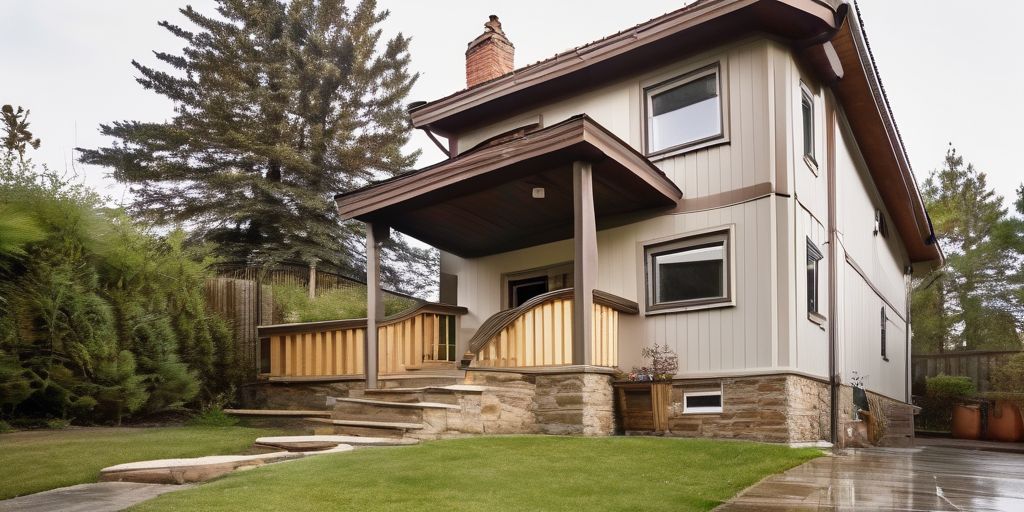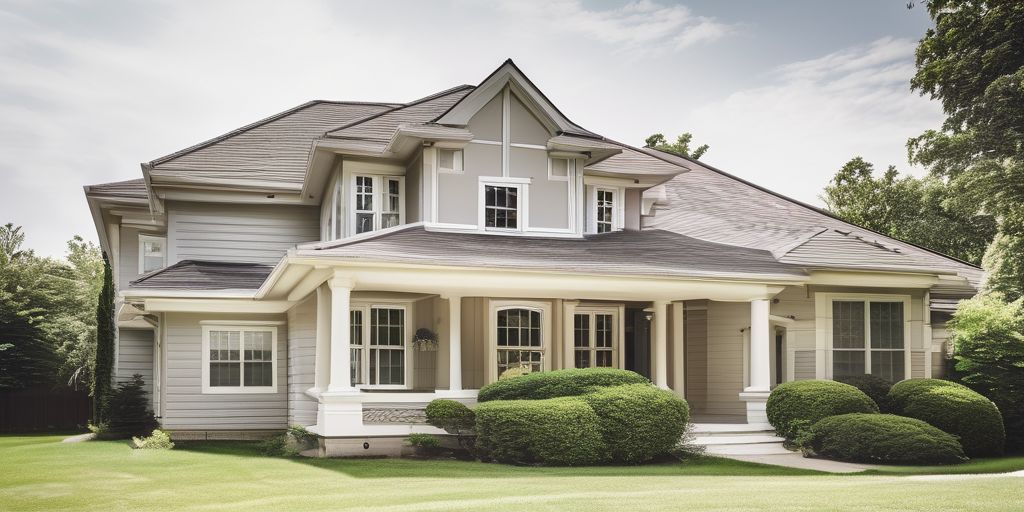Brick painting can transform the aesthetic appeal of a property, but it comes with its own set of challenges, especially when dealing with surface irregularities. In the Kitchener-Waterloo region, where climate and local architecture influence material choices and techniques, it’s crucial to understand the best practices for painting brick surfaces. This article delves into the preparation, techniques, solutions, and design considerations for brick painting projects, ensuring a flawless finish and enhanced property value.
Key Takeaways
- Proper assessment and preparation of brick surfaces are essential for a lasting paint job, including cleaning, priming, and addressing any surface irregularities.
- Choosing the right paint and application method for Kitchener-Waterloo’s climate can prevent future issues such as dampness, efflorescence, and paint failure.
- Color selection and design techniques, such as creating accent walls, can significantly enhance the property’s aesthetics and potentially increase its market value.
- While DIY painting can be rewarding, some situations call for professional expertise, and Kitchener-Waterloo offers ample resources for both DIY enthusiasts and those seeking professional services.
Preparing Your Bricks for a Fresh Coat
Assessing Brick Condition and Surface Irregularities
Before embarking on a brick painting project, it’s crucial to assess the condition of the brickwork. This initial step ensures that the surface is suitable for painting and helps in identifying any issues that may affect the final result. Here’s a checklist to guide you through the assessment process:
- Visual Inspection: Look for cracks, chips, or signs of weathering. These may require repairs before painting.
- Cleanliness: Check for dirt, mold, or mildew, which need to be removed for paint to adhere properly.
- Integrity: Test the bricks for stability. Loose or powdery bricks might indicate deeper problems.
- Moisture Levels: Ensure the bricks are dry. Painting over damp bricks can lead to peeling and other issues.
Once you’ve completed the assessment, you can move on to cleaning and priming, which are essential steps to enhance and protect your painted brick home. Remember, a well-prepared surface can significantly improve the longevity and durability of your paint job, especially in areas with varying climates like Kitchener-Waterloo.
It’s important to address any damage or irregularities before proceeding. Ignoring these can lead to subpar results and may necessitate costly repairs down the line.
Cleaning and Priming: The Foundation for Painting
Before applying a fresh coat of paint to your bricks, it’s essential to properly prepare and prime the surface. This preparation involves a few critical steps:
- Cleaning: Remove any dirt, debris, or biological growth with a gentle cleaning solution. For tougher stains, a mixture of mild detergent or TSP (trisodium phosphate) with warm water can be effective. Rinse thoroughly with clean water.
- Repairing: Address any cracks or damage in the bricks or mortar to ensure a smooth surface.
- Priming: Select a primer that is suitable for brick surfaces and the specific conditions of Kitchener-Waterloo’s climate. Apply it evenly to create a strong foundation for the paint.
Ventilation is crucial during this process, not only for safety but also to aid in the drying and curing of the primer, which contributes to the durability of the paint job. When considering painting techniques, think about how they will interact with the brick’s texture to achieve a lasting finish.
Remember, taking the time to clean and prime your bricks can significantly enhance the longevity and appearance of your paint job.
Choosing the Right Paint for Kitchener-Waterloo’s Climate
Selecting the appropriate paint for brick surfaces in Kitchener-Waterloo involves understanding the unique challenges posed by the local climate. Durability and weather resistance are key factors to consider, as the paint must withstand varying temperatures and humidity levels.
- Porosity of the brick is a critical aspect; a breathable paint allows moisture to escape, preventing damage.
- Ensure thorough cleaning of the brick surface before painting to promote better adhesion.
- Utilize proper tools and techniques for application, and be prepared for regular touch-ups to maintain the finish.
Proactive maintenance is crucial for the longevity of painted brick homes. Regular inspections and eco-friendly cleaning methods contribute to lasting beauty and protection from the elements.
When planning your project, take into account the seasonal weather patterns. Painting during a dry period with mild temperatures can greatly increase the success of your brick painting endeavor.
Techniques for a Flawless Finish
Brush, Roller, or Sprayer: What’s Best for Bricks?
Choosing the right tool for painting bricks is crucial for achieving a professional finish. Properly prime masonry brick surface for a professional finish. Here are some considerations:
- Brush: Ideal for small areas or where detailed work is required. Brushes allow for better control and less waste.
- Roller: Suitable for larger, flat surfaces. Rollers can cover more area quickly but may struggle with the texture of bricks.
- Sprayer: Offers the fastest application and can easily reach uneven surfaces. However, sprayers use about 33 percent more paint than rollers.
When deciding between a brush, roller, or sprayer, consider the specific needs of your project, the texture of the bricks, and the weather conditions in Kitchener-Waterloo.
Remember, each method has its own set of advantages and challenges. For instance, while a sprayer can provide a more uniform coat, it requires more preparation to protect surrounding areas from overspray. On the other hand, brushes and rollers offer more precision but can be more time-consuming.
Navigating Challenges with Brick Slips and Mortar
When painting brick surfaces, it’s crucial to address the unique challenges posed by brick slips and mortar. Proper technique is essential for achieving a smooth and even finish. Here are some tips to help you navigate these challenges:
- Assess the mortar joints: Ensure they are intact and stable. If repairs are needed, complete them before painting.
- Use the right tools: A narrow brush or a sprayer can be more effective for getting into the crevices of brick slips.
- Apply paint evenly: Avoid heavy application that can cause drips or uneven coverage.
Additionally, consider the weather conditions in Kitchener-Waterloo when planning your project. Sudden temperature changes can affect the drying process and the final look of the paint job.
Remember, patience and attention to detail are your best allies in overcoming the irregularities of brick surfaces.
While the focus is on technique, don’t overlook the importance of choosing the right type of paint that can withstand the local climate, ensuring the longevity of your work.
Sealing and Protecting Painted Brick Surfaces
Once the painting of brick surfaces is complete, it’s crucial to seal the paint to ensure its longevity and protect it from the elements. Sealing provides a barrier that helps prevent moisture penetration, which can lead to damage over time. Here are some key considerations for sealing painted brick surfaces:
- Selection of Sealant: Choose a sealant that is compatible with the type of paint used and is suitable for the local climate conditions.
- Application Method: Apply the sealant evenly across the surface, ensuring that all areas, including mortar joints, are covered.
- Curing Time: Allow adequate time for the sealant to cure fully before exposing the surface to moisture or touch.
It’s essential to achieve a professional finish by using the right painting techniques, such as spray painting or brush/roller application. Paying attention to details can bring out lifelike textures in the brickwork.
Remember, exterior paint forms a seal over the brick’s surface that will prevent any moisture in the bricks from evaporating. Trapped moisture can cause issues, so proper sealing is a step that should not be overlooked.
Innovative Solutions for Common Brick Painting Issues
Addressing Dampness and Efflorescence in Brick Walls
Dampness and efflorescence can significantly hinder the quality of a brick painting project. Properly addressing these issues is crucial before applying a fresh coat of paint. Here are some steps to tackle these challenges:
- Identify the source of moisture: It’s essential to find and rectify any water leaks or drainage problems.
- Clean the surface: Use soapy water and a stiff-bristled brush to remove dirt and efflorescence.
- Seal gaps and cracks: Caulking is vital to prevent further moisture ingress.
Waterproofing strategies are also important to consider in the Kitchener-Waterloo area, where climate conditions can contribute to these problems. Ensuring that your bricks are not only clean but also dry and sealed will provide a solid foundation for paint to adhere and last.
Remember, the goal is to create a barrier that keeps water out but still allows the brick to breathe, maintaining the integrity of the structure.
For persistent dampness issues, it may be beneficial to consult with professionals who specialize in moisture control and brick restoration.
Sound Insulation Considerations When Painting Brick Walls
When embarking on a brick painting project, it’s important to consider not just the aesthetic outcome but also the functional aspects, such as sound insulation. Paint can play a subtle role in the acoustic properties of a room, especially when applied to brick walls which naturally have sound dampening characteristics. Here are some points to keep in mind:
- Paint thickness: A thicker layer of paint may slightly improve sound insulation, but it’s not a substitute for dedicated soundproofing materials.
- Paint type: Some paints are denser and may offer marginal sound dampening benefits.
- Surface preparation: Ensuring the brick surface is smooth and free of debris can aid in consistent paint application, which indirectly affects sound transmission.
While paint alone won’t dramatically increase sound insulation, it can contribute to the overall ambiance of a space. For those particularly concerned with acoustics, additional soundproofing measures should be considered alongside painting.
Remember, the goal is to enhance both the beauty and comfort of your living space. A well-executed paint job can contribute to a serene environment, complementing other soundproofing efforts.
In Kitchener-Waterloo, where the architecture can range from historic to modern, selecting the right paint and application technique is crucial for maintaining the integrity of brickwork while also considering energy efficiency and sustainability.
Enhancing Your Property’s Aesthetics with Color and Design
Color Selection: Complementing Kitchener-Waterloo’s Architecture
Selecting the right paint color for your brick painting project is crucial, especially when considering the architectural heritage of Kitchener-Waterloo. A harmonious color palette can enhance the aesthetic appeal of your property while respecting the local architectural vernacular.
- Assess the surrounding environment: Look at the natural landscape and existing buildings to choose colors that blend well with the area.
- Consider historical context: If your property is in a historic area, select colors that are appropriate for the time period and style of the architecture.
- Think about the visual impact: Lighter colors can make your property stand out, while darker shades can give it a grounded, subtle presence.
When choosing colors, it’s not just about personal preference; it’s about creating a cohesive look that enhances the entire neighborhood.
Remember, the climate in Kitchener-Waterloo can also affect how paint colors appear and last over time. Be sure to select high-quality paints that can withstand the varying weather conditions.
Creating Accent Walls and Features with Paint
Accent walls can transform a space, adding depth and personality without overwhelming the room. Choosing the right color and technique is crucial for creating a feature that complements the overall design while standing out.
- Assess the lighting: Natural and artificial lighting will affect how the paint color looks.
- Texture matters: Consider the brick texture when selecting your paint technique.
- Plan your design: Whether it’s a geometric pattern or a more organic shape, planning is key.
When considering an accent wall, think about the mood you want to evoke. A bold color can energize a space, while a softer hue can create a calming atmosphere.
In Kitchener-Waterloo, where the architecture is diverse, an accent wall can pay homage to the area’s rich history or provide a modern twist. For instance, a deep red or earthy brown could nod to the traditional brickwork seen in some of the city’s historic buildings.
The Impact of Exterior Painting on Property Value
The decision to hire an exterior painter can have a significant impact on the value of a property. A fresh coat of paint not only enhances the aesthetic appeal but can also contribute to the overall marketability of a home or business. Here are some key considerations:
- First impressions: The exterior is the first thing potential buyers or clients see. A well-maintained and freshly painted facade can create a positive first impression.
- Protection against elements: Paint acts as a barrier against weather, protecting the brickwork from Kitchener-Waterloo’s varying climate.
- Modernization: Updating the color scheme can modernize older buildings, making them more attractive to contemporary buyers.
While the initial cost of painting might seem high, the long-term benefits often outweigh the expenses. A well-executed paint job can extend the lifespan of the exterior surfaces, potentially saving money on future repairs.
In Kitchener-Waterloo, where the architecture is diverse and the weather can be harsh, choosing the right paint and application technique is crucial. It’s not just about aesthetics; it’s about investing in your property’s future.
Professional Insights and Local Resources
When to Hire a Professional Painter in Kitchener-Waterloo
Deciding to hire a professional painter for your brick painting project in Kitchener-Waterloo can be a pivotal choice. Here are some scenarios where seeking professional help is advisable:
- Complexity of the project: If the painting project involves high areas, intricate details, or large surfaces, a professional’s expertise is crucial.
- Safety concerns: Painting can involve working at heights or with hazardous materials. Professionals have the necessary equipment and training to handle these risks safely.
- Time constraints: If you have a tight schedule, professionals can ensure the job is completed efficiently.
- Quality assurance: For a long-lasting and aesthetically pleasing result, the skill set of a professional painter can make all the difference.
Remember, a professional painter can provide valuable insights into the best practices and materials for Kitchener-Waterloo’s specific climate conditions.
While DIY can be rewarding, certain situations call for the experience and finesse of a professional. Evaluate your needs, the scope of the project, and the potential risks before making your decision.
Local Paint Suppliers and Their Offerings
When embarking on a brick painting project in Kitchener-Waterloo, selecting the right supplies is crucial. Local paint suppliers offer a range of products tailored to meet the needs of both DIY enthusiasts and professional painters. Understanding the local climate and architectural styles is essential when choosing paint that can withstand sun exposure and temperature variations.
- Preparation materials such as cleaners and primers
- A variety of paints suitable for brick surfaces
- Tools for application including brushes, rollers, and sprayers
- Protective gear to ensure safety during the painting process
Local suppliers also provide eco-friendly options for those looking to minimize environmental impact. These products not only enhance the aesthetics of your property but also promote longevity and sustainability. It’s important to consider the benefits of these paints, such as reduced toxins and better air quality.
Remember, the key to a successful painting project lies in the quality of the materials used. High-quality paints and tools can make a significant difference in the outcome and durability of your work.
Community Resources for DIY Painters and Renovators
For those embarking on a DIY brick painting project in Kitchener-Waterloo, a wealth of community resources is available to guide you through the process. Local hardware stores often host free workshops where you can learn about the latest painting techniques and surface preparation methods.
- Workshops and Seminars: Local experts share their knowledge on everything from selecting the right paint to effective application methods.
- Online Forums: Engage with fellow DIY enthusiasts to exchange tips and troubleshoot common issues.
- Libraries: Offer a variety of books and publications on home improvement, including detailed guides on brick painting.
Remember, thorough preparation is key to overcoming surface irregularities and achieving a professional-looking finish.
While online resources are invaluable, don’t overlook the benefits of in-person interactions. Community centers and local meetups can provide personalized advice and support. Additionally, consider the climate-specific challenges you might face; for instance, the humidity and temperature fluctuations in Kitchener-Waterloo can affect paint drying and adherence.
Discover the transformative power of professional painting services with our expert team at We Paint Siding. Serving the Kitchener and Waterloo regions, we specialize in reviving the beauty of your home’s exterior. From aluminum and vinyl siding to brick and stucco, our skilled painters use top-quality materials to ensure a durable and stunning finish. Don’t let faded or outdated siding diminish your home’s appeal. Visit our website to explore our extensive range of services, view before-and-after galleries, and book your free estimate today. Elevate your home’s curb appeal with We Paint Siding – where quality meets affordability.
Conclusion
In conclusion, tackling the challenge of painting over brick surfaces in Kitchener-Waterloo requires a thoughtful approach that considers the unique characteristics of brick as a building material. By understanding the importance of proper preparation, choosing the right paint and tools, and employing effective techniques, homeowners and professionals alike can achieve a beautiful and durable finish. Whether you’re aiming to enhance sound insulation, embrace the latest design trends, or simply refresh the look of your property, the effort put into overcoming surface irregularities will undoubtedly pay off. Remember, a successful brick painting project not only improves the aesthetic appeal but also contributes to the longevity and protection of your investment.
Frequently Asked Questions
What steps should I take to prepare my brick walls for painting?
Start by assessing the condition of the bricks and identifying any surface irregularities. Clean the bricks thoroughly to remove dirt, grime, and efflorescence. Apply a suitable primer to provide a good foundation for the paint, especially in the varying climate of Kitchener-Waterloo.
Which type of paint is best for brick surfaces in Kitchener-Waterloo?
Choose a paint that is durable and can withstand the local climate’s fluctuations. Acrylic latex paint is often recommended for its breathability and resistance to moisture and temperature changes.
Can I use a sprayer for painting bricks, or is a brush or roller better?
A sprayer can provide efficient and even coverage on brick surfaces, but for textured bricks with deep mortar joints, a brush or roller might be necessary to ensure paint reaches all crevices.
How do I address dampness and efflorescence before painting my brick walls?
Before painting, resolve any moisture issues and let the walls dry completely. Remove efflorescence with a stiff brush or an appropriate cleaner, and consider using a sealant to prevent future moisture penetration.
How does painting my home’s exterior affect its property value in Kitchener-Waterloo?
A well-executed exterior paint job can enhance curb appeal and potentially increase property value by giving the home a fresh, updated look that stands out in the Kitchener-Waterloo housing market.

